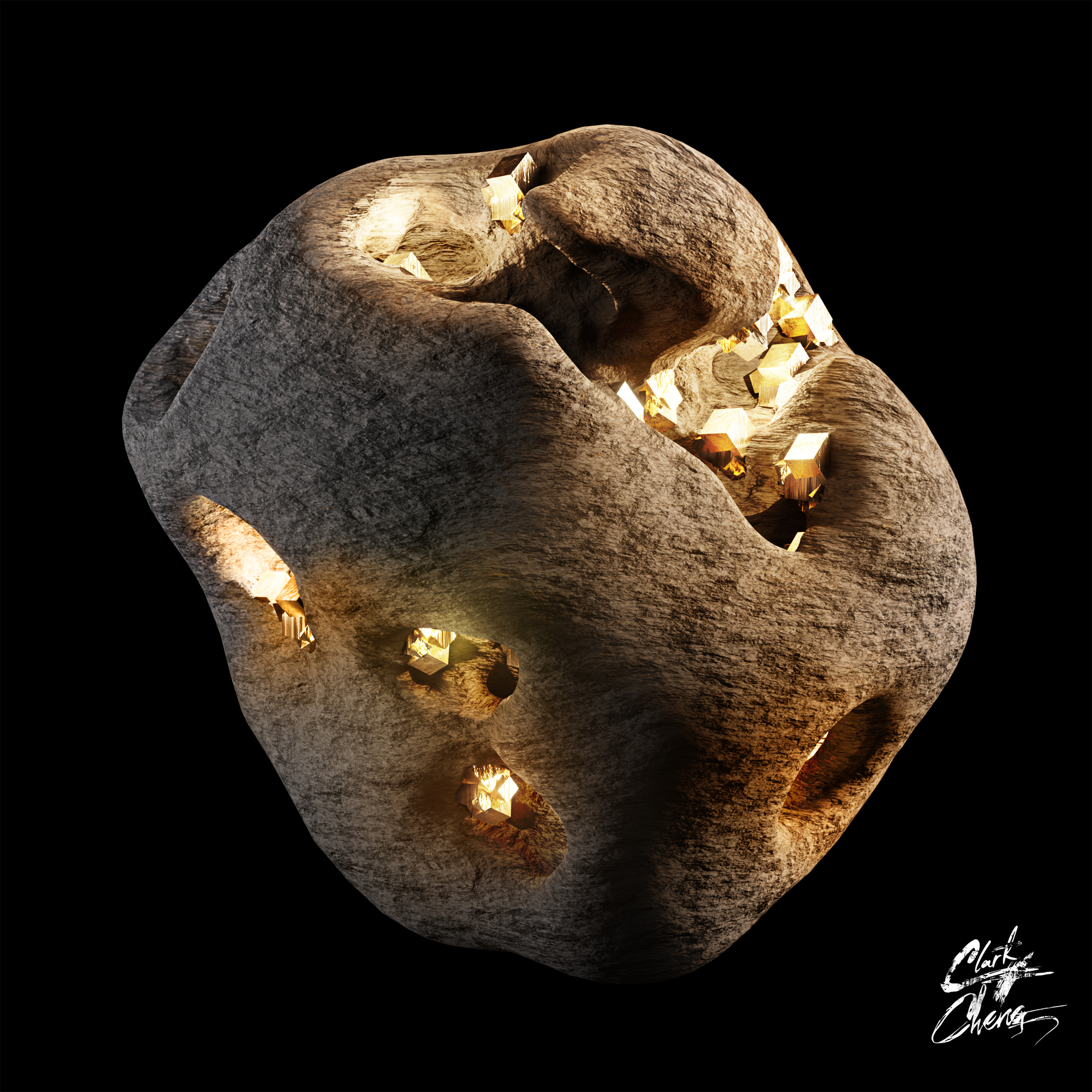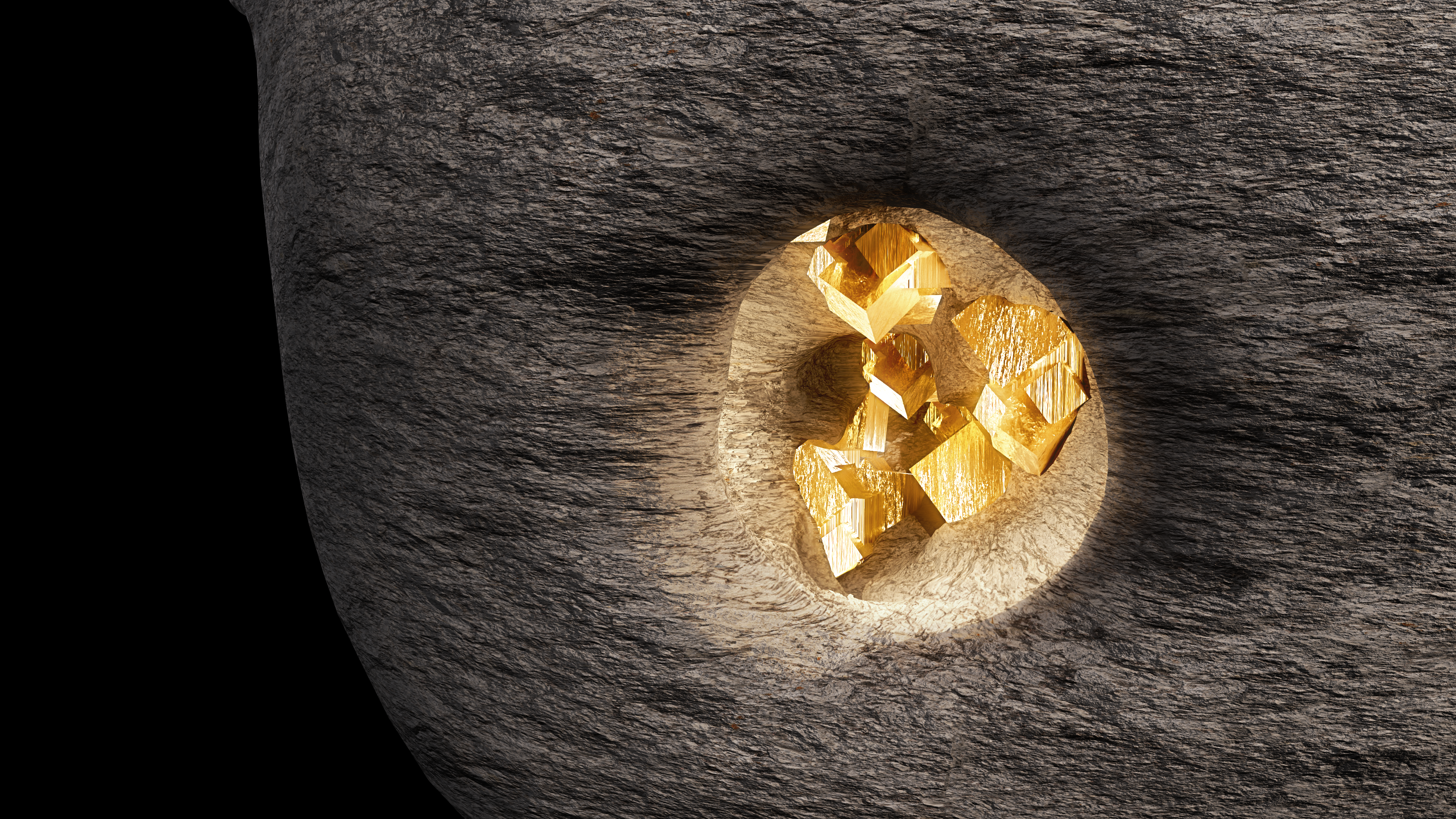Erosion
by Clark Cheng
This project explores procedural modeling and lighting experimentation through the use of Houdini and Redshift. The geometry draws inspiration from geodes and the naturally occurring cubic formations of pyrite, resulting in a visually striking blend of organic and crystalline structures. By leveraging Redshift’s light groups, I was able to isolate and control individual light contributions, refining the interplay of internal illumination and shadow. This process served as both a creative exploration and a technical exercise in mastering Houdini’s node-based workflows and Redshift’s advanced rendering capabilities.
Houdini Procedural Workflow
- Base Mesh Deformation: The process began with deforming a primitive mesh to create an organic foundation, evoking the form of a geoid while maintaining enough volume for internal operations.
- Subtractor Geometry Creation: Pyrite-inspired cubic shapes were modeled to serve as subtractor geometry. These rigid forms contrast with the organic base and are used to define negative space.
- Boolean Subtraction: Using Boolean operations, the subtractor shapes were carved into the base mesh, forming structured voids that resemble natural mineral formations.
- Curvature-Based Masking: A curvature analysis was performed on the surface of the mesh to generate masks. These masks allowed for controlled, location-specific effects like erosion or detail layering.
- Point Scattering from Mask: The curvature mask was used to drive scattering operations, placing points only in areas of high curvature or interest for subsequent procedural effects.
- Noise Application within Masked Regions: Procedural noise was layered on top of the mask-driven areas to break up regularity and simulate the randomness found in natural weathering or erosion.
- Crystal Instance Scattering: Pyrite-like cubic instances were scattered into the previously carved voids and masked areas, integrating a mineralogical element into the structure.
- Nested Boolean Refinement: Additional Boolean operations were used to subtract and integrate the instanced pyrite geometry, sharpening edges and creating a more intricate internal structure.
- Detail Pass & Surface Enhancement: Fine surface features and silhouette variations were added using micro-displacements and other detailing techniques to give a sense of erosion and material buildup.
- VDB Union for Geometry Merging: All mesh components were converted to volumes and unified using VDB operations, ensuring smooth transitions and a single cohesive form.
- Final Cleanup and Merge: The workflow concluded with a cleanup and merging phase, resolving geometry intersections and producing a watertight, render-ready model.
Redshift Light Group Exploration
As part of the rendering phase, I experimented with Redshift’s light groups to gain more precise control over scene lighting. By assigning each light—such as the key light, fill light, interior light, dome, and backlight—to a separate group, I was able to isolate and render their individual contributions. This allowed me to fine-tune the composition and mood of the scene without re-rendering the entire image. It also enabled flexible post-processing in compositing, where I could adjust intensity, color, and contrast per light group. This workflow proved invaluable in visually balancing the internal crystal glow with the subtle exterior lighting, reinforcing the contrast between organic geometry and mineral structure.


Iterations of the Geoid
This video showcases the iterative design process behind the geoid-inspired base mesh. It highlights how the form evolved through deformation, subtraction, and refinement stages. Each frame represents a different modeling milestone, illustrating how procedural tools in Houdini were used to explore shape language, balance negative space, and integrate pyrite-like structures.
Light Groups in Redshift
This render pass breakdown demonstrates the use of Redshift’s light groups to isolate and control individual lighting contributions. By separating key, fill, back, dome, and interior lights into distinct groups, the video reveals how each light influences the final composition. This approach enabled precise lighting adjustments in post and enhanced the visual storytelling through contrast and depth.
















